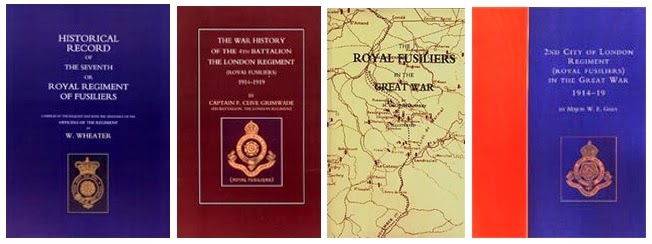
This post will look at army service numbers issued to men joining the four regular battalions of the Rifle Brigade. The regiment was unaffected by the 1881 Cardwell Reforms and thus continued with the numbering sequence it had been using up until that point.
Note however, as David Langley points out, that the King's Royal Rifle Corps was also "unaffected" by the 1881 Cardwell Reforms and yet it started numbering from 1 in 1881. As David suggests, the Rifle Brigade's refusal to toe the line would appear to be down to either arrogance or ignorance - unless of course, somebody else knows better.
Service records for the following Rifle Brigade regimental numbers survive in the WO 363 (Burnt Documents) and WO 364 (Pensions) series at the National Archives in Kew, London. These records can also be viewed on-line on Findmypast which is currently offering a FREE 14 day trial.
In fact There are over 70,000 Rifle Brigade service and pension records in various War Office series held at the National Archives. Clicking on the link will take you to the results on Findmypast but you will need a subscription or Pay-Per-View credits to actually view the records. Findmypast has by far the most comprehensive service record collection.
Use the regimental numbers and dates on which these were issued, below,
to determine parameters for when your own Rifle Brigade ancestor
would have joined up. Note though that these numbers are only for regular
enlistments. Special Reserve and Territorial Force battalions operated
completely separate regimental number sequences.
5037 joined on 19th November 1881
5185 joined on 7th January 1882
5539 joined on 10th April 1883
6764 joined on 30th June 1884
7779 joined on 23rd October 1885
7978 joined on 18th January 1886
8831 joined on 12th March 1887
9549 joined on 10th March 1888
9919 joined on 12th January 1889
With the numbering sequence fast approaching the 9,999 limit, application would have been made to commence a new number series. Approval was duly given and number 1 in the new series was issued in February 1889.
Also see my post on Queen's and King's Regulations regarding numbering in the British Army.
520 joined on 21st February 1890
1291 joined on 25th June 1891
2155 joined on 7th March 1892
2660 joined on 16th March 1893
3148 joined on 2nd March 1894
3629 joined on 8th March 1895
4475 joined on 6th March 1896
4839 joined on 11th January 1897
5478 joined on 21st January 1898
6571 joined on 28th March 1899
7297 joined on 1st January 1900
8475 joined on 25th June 1901
8989 joined on 7th April 1902
9565 joined on 6th January 1903
With its numbering sequence again approaching the 9,999 limit, application was again made to commence a new number series. Approval was duly given and number 1 in the new series was issued, probably in late December 1903 (number 9996 was issued to 18-year-old Albert Edward Garrett when he joined up on the 28th December 1903).
27 joined on 7th January 1904
658 joined on 4th January 1905
1472 joined on 20th January 1906
1831 joined on 1st January 1907
2459 joined on 7th November 1907
2607 joined on 16th January 1908
3340 joined on 16th January 1909
3586 joined on 4th January 1910
4186 joined on 21st March 1911
4413 joined on 2nd January 1912
4960 joined on 14th January 1913
5363 joined on 4th February 1914
By 24th July 1914, the Rifle Brigade was up to 5568 and when Britain went to war with Germany two weeks later, the regiment maintained this number series for men who still wished to enlist as career soldiers for regular terms of enlistment. Those men joining service battalions were given numbers from different number series (and often different number prefixes depending either on their status or the battalion in question).
Pictured above, my great uncle S/18321 Private John Frederick Nixon. Jack, as he was known to his friends and family, joined a service battalion of the Rifle Brigade in 1916 and was killed in action on 3rd October 1918 whilst attached to the Post Office Rifles. He has no known grave and is commemorated on the Vis-en-Artois memorial in France. Read more about Jack Nixon here.
I also offer a comprehensive, fast and cost-effective military history research service. Follow the link for more information.
From: The Naval & Military Press:

Verner's History & Campaigns of the Rifle Brigade 1800-1813

History of the Rifle Brigade in the War of 1914-1918















